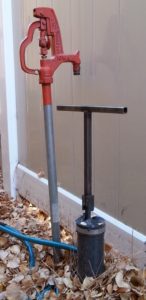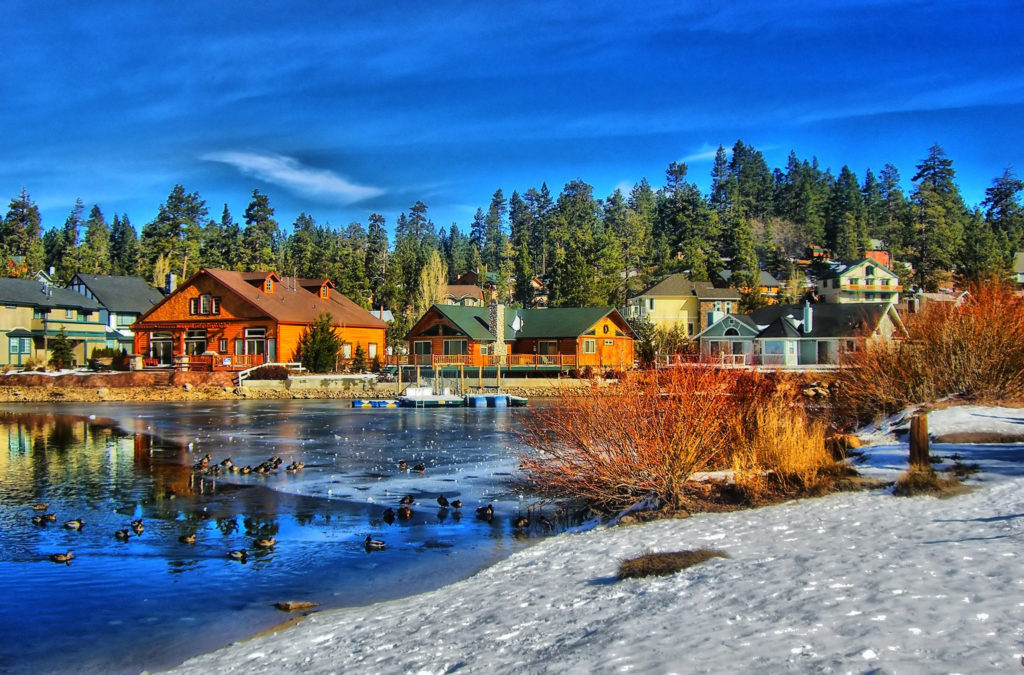Be wise and winterize!
As temperatures get down below freezing in Big Bear, homeowners need to take precautions to protect their cabins from property damage due to frozen broken pipes.
Any water pipe exposed to temperatures of 32ºF or below can freeze. Expansion of water as it freezes can generate enough pressure to burst pipes and fixtures. As those pipes thaw, water may flood your home causing unwanted damage and expensive repairs. Pipes in attics, crawlspaces and exterior walls are particularly susceptible to freezing.
How to prevent frozen water pipes
Homeowners who plan to be away from their cabins for any period of time should take the following steps in preparation for winter weather:
1. Shut off your water at the stop and drain valve (also known as a stop and waste valve)
 Locate you stop and drain valve – it is a square metal rod sticking out of the ground. It is usually located outside between your home and the water meter, but could be elsewhere, like inside under a sink. Some homes have more than one stop and drain valve.
Locate you stop and drain valve – it is a square metal rod sticking out of the ground. It is usually located outside between your home and the water meter, but could be elsewhere, like inside under a sink. Some homes have more than one stop and drain valve.- Turn the valve clockwise a quarter turn (or until it stops moving) with a stop and drain valve key, called a T-bar, which can be purchased at a local hardware store.
- Mark your stop and drain valve with a tall stake so it is easily located in deep snow.
- Keep your stop and drain key in a safe place where it can be easily located in an emergency.
- Do not shut off your water at the meter.
2. Drain interior water lines
- Open faucets and flush toilets to remove water from the interior lines.
- If the water does not stop, check the stop and drain valve to make sure it is completely shut off.
- Pour biodegradable anti-freeze into all toilets and sinks to displace water in the toilet bowls and drain traps.
3. Drain outdoor water lines and irrigation systems
- Disconnect garden hoses and drain hose bibs.
- Drain all irrigation system components that might freeze.
- The Big Bear Lake DWP requires irrigation systems to be shut off and winterized from November 1 to April 1.
4. Keep your home heated
- Instead of (or in addition to) draining your plumbing system, you may heat your home.
- Leave your thermostat at a minimum of 55ºF.
- This method does not always ensure that your pipes will not freeze during extreme weather conditions. Winter storms may cause power outages, which can disable most heating systems.
5. Additional ways to protect your home
- Seal off all air leaks at windows and doors with caulking, weather stripping and insulation.
- Wrap exposed pipes with insulated pipe wrap, foam jackets or heat tape.
NOTE: Since all Big Bear homes are built and plumbed differently, it is recommended that you consult a plumber or home inspector about the best way to winterize your particular property.




Leave a Reply